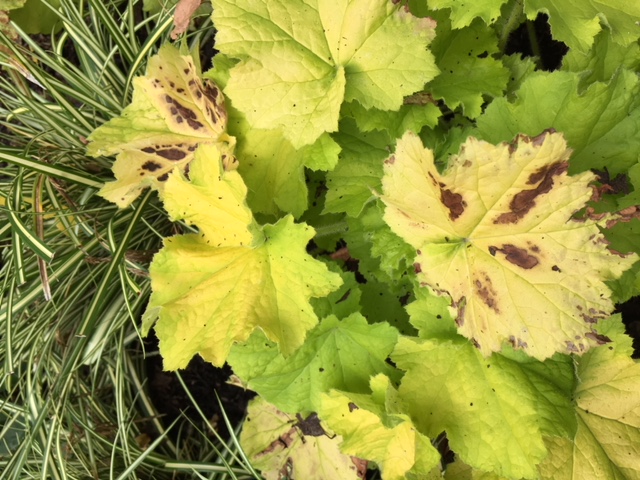
People rejoice in the summer sun and plants respond with lush growth. But there can be too much of a good thing. I’ve recently been reminded of that.
My houseplants spend the summer every summer in the fresh air and sweet breezes of my yard, in the shade of buildings and trees. This year, I moved them out into their usual places in May. A few days later, I was dismayed to discover that most were thoroughly fried. Leaves that weren’t brown and dried up were discolored and pale. They looked like I feel when I realize I’ll pay with a sunburn for a long day at the beach.
How could this happen? I looked up, blinked in the sun, and saw that the mulberry tree next door, which normally creates a canopy as shady as a beach umbrella, had hardly leafed out at all. The sun was shining right through its bare branches onto my shade-loving plants.
After alerting the neighbors to call an arborist, I set out to salvage my houseplants. These plants come from the shady understory of tropical rainforests. The shade tolerance they have evolved is what makes them able to survive in living rooms. They’re right at home outdoors in summer under a shady tree. But they’re defenseless if the shade fails.
It wasn’t lack of water or heat that had done the damage—the spring temperatures were well within the plants’ comfort range. It was sheer sun. Shade plants like these don’t have the protective pigments and other chemical and structural defenses that sun-adapted plants have in their leaves and stems.
That’s why it’s wise to have a shade strategy for your conservatory or greenhouse—whether it’s shade cloth over the whole structure or just a shaded place where you can move sensitive plants. Some plants that are happy under the glass in the winter, when the angle of the sun is low, can be scalded in June when the sun shines directly down. The glass itself absorbs some of the sun’s rays, but not enough to protect all plants.
Too much sunlight is not a problem I am used to having in my yard, where I usually struggle to get anything to bloom in the dark, although once or twice I’ve had an ill-placed, pale-leaved mound of coral bells get scorched in a dry spell.

However, I hustled my prayer plants, spider plants, dracaenas and begonias into the shade of a maple and snipped off their crisped and discolored leaves, leaving them looking scalped and embarrassed. I watered them and administered a half-strength dose of fertilizer to help them recover without pushing them too hard. Over the next few days, they started looking a little greener and putting on a few new leaves.
The tree next door has been condemned (mulberries are fast-growing but not long-lived, and this one has a big crack down the middle). That will be a major change for my yard. I’m spending this summer watching the shadows move across my yard and figuring out where my plants will get enough shade to be safe. It’s a reminder to make sure plants are placed in conditions similar to what they evolved for, and to take nothing for granted in the garden.


